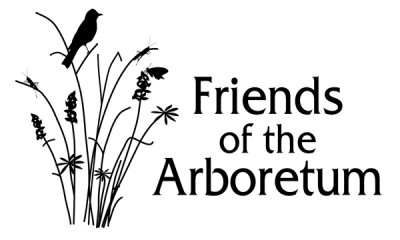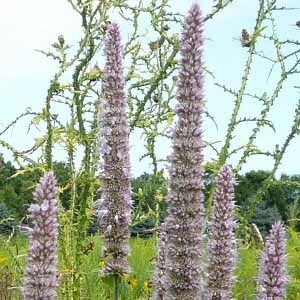COMMON NAME: Purple Giant Hyssop, Anise Hyssop
SCIENTIFIC NAME: Agastache scrophulariifolia – The first part comes from Greek words for “much” and “grain stalk” in reference to the flower spikes. The common name of hyssop comes from hyssopos meaning “holy herb.” In biblical times it was used to treat lepers.
FLOWER: 3-6 inch spikes of pale purple flowers in dense whorls
BLOOMING PERIOD: July to September
SIZE: up to 6 feet tall
BEHAVIOR: This is a biennial plant (blooms the second year). It seeds easily and also spreads by rhizomes. It’s an excellent plant for open woodland and savannas, as well as gardens and prairies. Note the square stems. The flowers open slowly over several weeks.
SITE REQUIREMENTS: Grows easily in average, well-drained soils in full sun to part shade, but best in full sun. Not recommended for clay soils.
NATURAL RANGE: Northern United States (becoming very rare in New England), west to Minnesota and South Dakota Kansas and Missouri. It is also native in Texas, Georgia and the Ohio River valley. In Wisconsin it is found in Dane County and other southwestern counties.
SPECIAL FEATURES: The leaves are anise scented, white underneath. Flowers attract bees, butterflies and hummingbirds. The flowers can also be dried and used in permanent dried arrangements. Dried leaves are used in potpourris. It seems that the anise scent repels mammals so it is deer resistant.
SUGGESTED CARE: Water well to get established, but then the plants tolerate dry to medium moisture. Deadhead spent flowers to promote additional bloom. This plant does not tolerate competition so it is necessary to keep it well weeded.
COMPANION PLANTS: White prairie clover, large Solomon’s seal, brown-eyed Susan, heart-leafed golden alexander, coreopsis, bergamot, spiderwort, wild strawberry.

